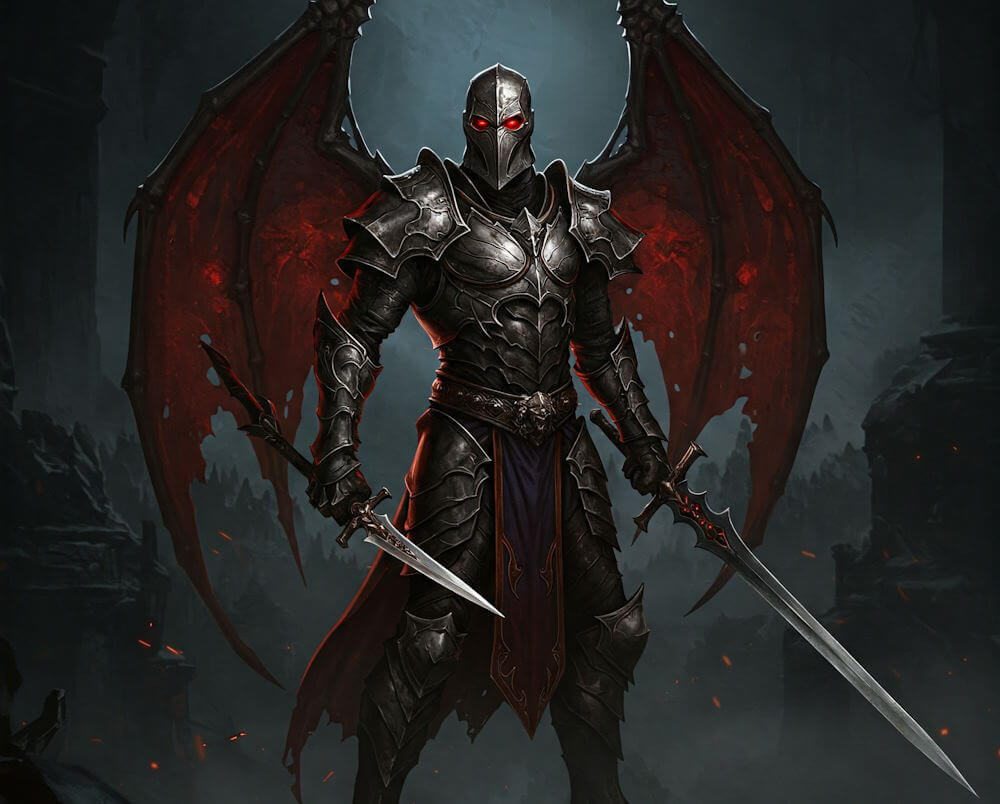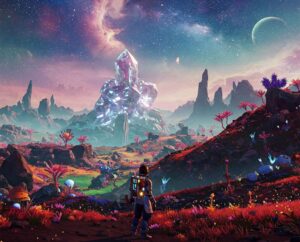The Diablo franchise has long been a cornerstone in the action role-playing game (ARPG) genre, captivating audiences since the release of its first title in 1996. With its dark fantasy theme, rich lore, and engaging gameplay mechanics, each installment has left a significant mark on the gaming landscape. As we venture into the world of Diablo IV, it is crucial to understand the context that has shaped this awaited title, the aspirations of its developers at Blizzard Entertainment, and the expectations of its loyal fan base.
Following the somewhat controversial launch of Diablo III, which faced criticism for its online requirements and the implementation of the auction house, Diablo IV aims to reestablish the franchise’s reputation. The developers have emphasized their commitment to delivering an experience that resonates with fans of the original titles, focusing on improved gameplay, deeper narrative elements, and a more immersive world. As players return to Sanctuary, they are eager to explore darker themes and engage in the familiar struggle against the forces of evil, with the potential for continual updates and expansions that further enrich the gaming experience.
The excitement surrounding Diablo IV’s release is palpable, fueled by the insight shared through trailers, beta testing, and community engagement that have showcased sophisticated graphics, redesigned mechanics, and a return to the franchise’s roots. These advancements and artistic achievements are meant to offer not only a nostalgic experience but also a fresh take that appeals to both new players and longtime fans alike. As the launch date approaches, the anticipation continues to build, signaling a promising return to a realm that players have long cherished. Ultimately, Diablo IV signifies a pivotal moment in the franchise’s storied history, with high hopes for revitalized gameplay and narrative depth that honors its legacy while charting a path forward.
Graphics and Art Style
Diablo IV marks a significant evolution in visual presentation within the franchise, showcasing a striking graphic design that enhances the engaging gameplay. The game’s art style is a blend of dark fantasy and realism, creating a captivating atmosphere that draws players into its hellish realm. Unlike its predecessors, Diablo IV integrates a more intricate and detailed world, where character models and environments exhibit a level of craftsmanship that elevates the gaming experience.
The character designs are particularly noteworthy, featuring a variety of classes with unique aesthetics that reflect their lore and abilities. Each character model showcases meticulous detailing, from the textures on armor to the animations during combat, all contributing to a vivid visual narrative. The diverse environments, ranging from desolate landscapes to lush, cursed forests, are depicted with striking color palettes that enhance the immersive quality, offering a stark contrast to the hellish undertones of the storyline.
Furthermore, the use of lighting is a critical element that sets Diablo IV apart from earlier titles. Dynamic lighting effects contribute to the game’s moody ambiance, with shadows that realistically interact with characters and objects. This is particularly effective during combat scenarios, where the interplay of light and darkness instills a sense of urgency and tension. The atmospheric elements, such as swirling fog or flickering flames, add an additional layer of depth, effectively drawing players further into the game’s world.
Ultimately, the combination of refined graphic design, a compelling art style, and masterful use of color and lighting significantly impacts the overall gameplay experience in Diablo IV. The attention to detail in visual storytelling illustrates the franchise’s commitment to leveraging technology and artistry in creating an engaging environment for players to explore.
Gameplay Mechanics and Features
Diablo IV reintroduces players to the dark and immersive world that has defined its franchise, enriched with vital gameplay mechanics that enhance player experience. At the core of this installment is an evolved combat system, which provides seamless integration between fast-paced action and strategic depth. Players will navigate intricate environments while engaging in a variety of combat styles against formidable foes, delivering a blend of excitement and challenge.
The character classes in Diablo IV—Barbarian, Sorceress, Druid, Rogue, and Necromancer—each present unique gameplay mechanics that cater to different playstyles. The Barbarian, for instance, excels in melee combat, utilizing a variety of brutal attacks. The Sorceress, on the other hand, commands elemental powers, offering ranged combat options that can devastate enemies from a distance. This diversity in characters not only enhances replayability but also allows players to experiment with various approaches to combat.
Another significant aspect is the skill tree system, revamped to promote deeper customization of each character. Instead of predefined builds, players can develop their characters according to their preferences by choosing from a plethora of active and passive skills. This mechanic encourages experimentation within gameplay, pushing players to adapt and modify their strategies in response to different challenges and enemy types.
Inventory management has also seen improvements, offering a more user-friendly interface that simplifies item sorting and usage. Players can not only manage equipment more effectively but also actively engage in crafting, enhancing items for optimized combat performance. Overall, the enhancements introduced in Diablo IV significantly improve upon previous entries, providing both long-time fans and newcomers with an engaging, satisfying gaming experience.
Storyline and World-Building
Diablo IV returns to the dark and immersive universe that has defined the franchise since its inception, weaving a compelling narrative that captivates both long-time fans and newcomers alike. Set many years after the events of Diablo III, the game’s storyline revolves around the resurrection of Lilith, the dark mother, and her quest to bring chaos and despair back to the world of Sanctuary. This plot invites players to confront not only external foes but also the moral dilemmas that arise within the quest for power and survival.
The characters in Diablo IV serve as conduits for the overarching themes of despair, hope, and the eternal battle between good and evil. Players encounter a diverse cast, from intriguing allies to formidable foes, each deeply rooted in the rich lore that has been meticulously crafted over the years. Notably, the game’s storytelling integrates player choices, which adds layers of complexity to character interactions and outcomes. This choice-driven narrative enhances the gaming experience, allowing players to engage with the world on a personal level, creating a sense of agency seldom seen in traditional action role-playing games.
The world-building aspect of Diablo IV is equally impressive, with sprawling landscapes that range from cursed forests to forsaken cities, all meticulously designed to evoke a sense of dread and wonder. Each location is infused with lore that tells a story of its own, from the remnants of great civilizations to the lingering shadows of past atrocities. This attention to detail not only enriches the gameplay but also ensures that players feel a genuine sense of immersion in the hellish realm of Sanctuary. As players traverse these environments, they encounter various elements that expand upon existing lore, seamlessly connecting the new narrative threads with the series’ history.
Multiplayer Experience
The multiplayer aspect of Diablo IV introduces players to a richly interconnected environment that enhances the gaming experience through various collaborations and interactions. The co-op gameplay features allow players to team up with friends or join random companions, facilitating a shared journey in the dark, immersive world of Sanctuary. This cooperative mode promotes strategic teamwork and quick coordination in tackling hordes of enemies, as well as formidable bosses that are often designed to challenge groups rather than individuals. Such engagement not only enriches gameplay by fostering camaraderie but also provides an opportunity to share resources and loot, making it a rewarding experience for those who prefer playing with others.
In addition to cooperative gameplay, Diablo IV incorporates Player versus Player (PvP) elements that inject a level of competitiveness into the multiplayer experience. Players can enter designated PvP zones, where they can test their skills against one another while engaging in thrilling battles. This element adds a dynamic layer to the gameplay, enticing those who thrive on competition and allowing for unique experiences that deviate from traditional PvE encounters. However, it is essential for PvP to be balanced enough so that it does not overshadow the enjoyment associated with cooperative elements, especially for players who prefer to progress through quests alone.
The integration of community interactions in Diablo IV further enhances the multiplayer experience. Players can communicate in real-time through chat features, form guilds, and participate in various community events. These interactions encourage social bonds and increase the overall enjoyment of the game, as players can share their accomplishments, strategies, and lore discoveries. While the multiplayer elements undoubtedly elevate the game, it is critical that they do not detract from the satisfaction of solo play, as many players may prefer the rich narrative and immersive world offered in solitude. Ultimately, the balance between multiplayer features and single-player enjoyment is pivotal in determining the overall experience in Diablo IV.
Endgame Content and Replayability
The endgame content in Diablo IV presents a robust offering for players seeking to extend their journey beyond the main storyline. Once players conclude the central narrative, they are introduced to various activities designed to enhance the longevity of the game. One notable feature is the inclusion of World tiers, which escalate in difficulty and rewards, providing players with progressively challenging enemies and gear that scales with their level. This tiered system not only ensures that veteran players face formidable foes, but also invites newcomers to gradually increase their skill and understanding of the game mechanics.
In addition to World tiers, players can explore Nightmares, which serve as high-level dungeons that feature randomized layouts and modifiers. These allow for a unique experience with each run, further enhancing the replayability of the game. The unpredictable nature of these dungeons keeps the experience fresh, as players must adapt their strategies to overcome the various challenges presented in each encounter. Additionally, the inclusion of seasonal content ensures new quests, items, and gameplay mechanics are regularly introduced, encouraging players to return and experience the evolving game world.
The game also features an expansive PvP system, where players can engage in battles within designated zones. This adds another layer to the endgame experience, as players can test their skills against each other in a competitive environment. Furthermore, the potential for loot-sharing and leaderboard achievements fosters a sense of community and motivates players to optimize their builds for both cooperative and adversarial gameplay.
Overall, the endgame content in Diablo IV is carefully crafted to sustain player interest and ensure engagement. With varied activities, procedural generation, and periodic content updates, players are afforded ample opportunities to delve back into the hellish realm, maximizing their enjoyment while exploring the depths of Sanctuary.
Technical Performance and Stability
The launch of Diablo IV marked the much-anticipated return to the iconic hellish realm that many players have come to cherish. However, alongside the excitement of exploring Sanctuary, the technical performance and stability of the game have been closely examined. Players experienced various frame rates, load times, and overall stability during the initial days following the release.
On launch day, Diablo IV showcased commendable frame rates across a range of hardware configurations. Most players reported smooth gameplay at 60 frames per second on platforms such as the PlayStation 5 and Xbox Series X. Additionally, the game exhibited impressive graphics, with intricate environments and character designs enhancing the overall experience. However, some users on older platforms encountered frame drops in highly populated areas or during intensive actions, which can be attributed to hardware limitations rather than inherent flaws in the game.
Moreover, load times appeared to be optimized effectively, with players experiencing a marked reduction compared to its predecessors. Fast-traveling within the game world and transitioning between zones was generally seamless, indicating that developers implemented enhancements to the underlying technology. Notably, these shorter load times contribute significantly to player engagement, allowing uninterrupted exploration of the vast landscapes.
However, no launch is without its challenges, and some players faced technical issues such as server congestion and disconnections shortly after Diablo IV became available. These concerns were particularly pronounced during peak gaming hours, leading to frustrations for many eager adventurers. Fortunately, the developers quickly acknowledged these problems, and ongoing support has been evident, with regular patches and updates addressing performance complaints and enhancing overall stability. Continuous improvement efforts from the development team assure players that performance matters are being addressed as Diablo IV evolves.
Community Feedback and Reception
The release of Diablo IV has sparked significant discussions within the gaming community, leading to a diverse array of player reviews and reactions across platforms. Many players expressed high expectations prior to the game’s launch, driven by the franchise’s storied history and the anticipation generated through promotional campaigns. Since its release, the community’s reception has been predominantly positive, yet it also includes a variety of opinions highlighting both strengths and shortcomings.
Players frequently note the engaging storyline and atmospheric graphic design as standout features. The game’s dark thematic elements resonate well with long-time fans of the series, drawing praise for successfully recapturing the essence that made previous installments popular. Additionally, the combat mechanics and character customization options received acclaim, offering players a sense of agency in their adventures through Sanctuary.
Conversely, some feedback highlights areas of concern. Players have reported dissatisfaction with certain in-game mechanics, including aspects related to endgame content and seasonal updates. These critiques reveal a desire for more depth and variety in gameplay after the initial storyline is completed. Social media platforms and forums have become a touchpoint for these discussions, as gamers contemplate the balance between nostalgia and innovation within the series. Critics have also weighed in, with reviews generally lauding the game while emphasizing the need for continual improvement post-launch.
Overall, the reception of Diablo IV illustrates a complex reaction, balancing the excitement of returning to a cherished universe with legitimate critiques about gameplay depth. As developers are known for actively engaging with community feedback, it is expected that future updates may address many of these concerns, thus shaping the game further and maintaining its relevance in the competitive gaming landscape.
Final Thoughts and Conclusion
Diablo IV emerges as a noteworthy addition to the iconic series, successfully melding traditional elements with fresh innovations that engage both long-time fans and newcomers. The game’s dark aesthetic and atmospheric storytelling evoke a sense of nostalgia while forging new paths within the established lore. One of the standout features of Diablo IV is its emphasis on player choice, allowing individuals to carve their unique paths and craft personalized experiences. This degree of freedom enhances replayability, a hallmark of the franchise that keeps players returning to the hellish realm.
Moreover, the game’s improved graphics and expansive open-world design create an immersive environment that encourages exploration and interaction. Players can traverse diverse landscapes, encountering a variety of foes and environmental challenges that enrich gameplay. The inclusion of multiplayer elements also adds a collaborative dimension, enabling friends to join forces or even compete against each other, which heightens the engaging experience. However, it is important to mention some fiscal concerns; while the title delivers extensive content, the potential for additional microtransactions may raise eyebrows among the community.
In light of the mechanics and artistic direction presented in Diablo IV, the title appears to strike a fine balance between respecting the series’ legacy and venturing into new territories. The developers have made commendable strides in addressing previous criticisms, particularly in terms of combat mechanics and character customization. Nevertheless, there are lingering concerns regarding pacing, which may leave some players yearning for a more streamlined progression system. Overall, Diablo IV stands as a strong contender within the franchise, and it ultimately invites both veterans and newcomers to explore its hellish depths, reaffirming its position in the gaming landscape.





